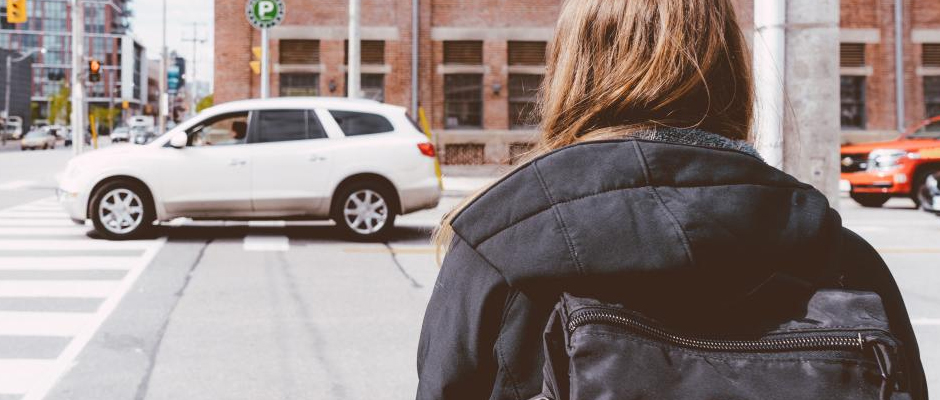Teach Your Children to Walk AGAINST Traffic
Recently, I wanted to do an experiment where I would keep track of the number of times I would see someone walk in the same direction as traffic. The plan was to count them regardless of whether or not there was a sidewalk, and I would do this for about 30 days. A bonus for this experiment was whether or not they had their face stuck in their phone, had headphones in, or any other sort of distraction going on. However, after about ten days, I stopped counting because I could rarely find someone NOT doing all the wrong things.
When I was a young boy, we were taught that it was best to walk against traffic for safety reasons. Since then, studies have proven its effectiveness in this regard. And while I have heard some suggest that if there are sidewalks on either side of the road, it does not matter if you walk with or against traffic, I’m going to suggest you teach your children to ALWAYS walk against traffic for a few very specific safety reasons.
Let’s start with the idea that in 2015, there were 129,000 pedestrians requiring emergency care after being hit by a car. Of those, 5,376 lost their lives as a result of their injuries. This is a tragic number, especially when you compare it to other death-related statistics. Studies estimate that pedestrian collisions can be reduced by around 77 percent of people would simply walk AGAINST traffic.
The explanation for this is simple. When you can see an approaching car, you afford yourself an opportunity to jump out of the way if it’s heading toward you. But when cars approach from behind, the driver is the one left with the responsibility to avoid hitting a pedestrian. This is a terrible idea for the pedestrian because you are literally putting your life in the hands of a stranger, and this is especially true when the pedestrian willfully distracts themselves even further with technology.
Imagine for a moment that the pedestrian walking WITH traffic is distracted by their smartphone or the music blasting in their ears. Then imagine that a diver is distracted by their smartphone, a passenger, or other vehicles on that same road. Now, this is not to say that tragedy is inevitable, but it is clear that the odds of an avoidable tragedy have increased substantially. The pedestrian could very easily become a part of that 129,000 figure in this scenario, but they could just as easily be a part of that 77 percent if they would have walked against traffic.
Now, pedestrian safety is important, but let’s take a moment to discuss a somewhat related topic that many parents try hard not to think about. Did you know that every 40 seconds, a child goes missing somewhere in the United States? Many of those missing children are kidnapped or abducted.
The National Center for Missing & Exploited Children analyzed data spanning ten years. One of the trends they found was that school-aged children are more likely to be the victim of abduction when walking alone and give in to verbal ploys by a would-be abductor. Something to note here is that between 21 and 28 percent (depending on age) of cases reviewed involved the offender making demands for the child to get in their vehicle, and an additional 11 to 15 percent involved the offender simply offering a ride or engaging in conversation.
So consider for a moment the increased protection that walking AGAINST traffic might afford your loved one. For starters, walking against traffic reduces the opportunity for communication. So if you teach your children to walk against traffic, not only would they be able to see a potential threat coming, but it would increase the difficulty for the would-be abductors in a number of different ways, and this is especially true if there are other cars on the road.
The safety of your children increases substantially when you teach them to avoid distractions as much as possible while walking. Not being able to hear a potential threat puts your loved ones at a great disadvantage. This means no earbuds while walking. You want to ensure that your children can run sooner rather than later, regardless of whether it’s an approaching car or an approaching stranger.
Of course, this requires teaching your kids to run to school or to run home for help when they feel threatened. Understand the distinction here. You don’t want to teach them to run away from a problem; you want to teach them to run for help from an adult or friend. The younger they are, the more likely they will need an adult to intervene but regardless of age, you always want the odds in your favor.
I would also suggest that you teach your children to listen to their intuition. Sometimes things don’t sound right or don’t feel right, and we need to teach our children to listen to that feeling. This is especially true when hearing someone (anyone) tell us something that doesn’t sound right. TEACH YOUR KIDS TO QUESTION EVERYTHING! Let me give you an example.
A common ploy used is a child being told that a parent or loved one is sick or injured, and the would-be abductor was told to come to pick them up right away. You should teach your kid to use that phone to contact someone else to confirm it before getting in the vehicle. Or you could teach them to head straight home first or to go back to school to get an adult to help confirm it.
The unfortunate truth is that most of all abductions are carried out by either a family member or an acquaintance. The solution here is simple: ensure that you and your child have a specific and easy plan. Make sure that your children know that they are NEVER to get into a car with ANYONE without you or a designated guardian having direct contact with them before they do.
And let me stress that this article shouldn’t scare you into sheltering your children or stopping them from getting extra freedom to play. Statistically speaking, your children are actually safer than when we were children. Just don’t let your children go out alone, and ensure that they understand the importance of following these guidelines and paying attention. Ensure that they have a trusted friend or family member with them or can call them immediately. Not only does this make them a harder target, but it also creates witnesses if any attempt at abduction is made. And arguably, the most important part is to be sure that your children understand that it’s better to get out of a potentially bad situation that they don’t feel comfortable with than it is to be polite to others (even family members or acquaintances).
In Summary:
- It’s a MUCH safer world out there these days… BUT there is still work to be done
- ALWAYS walk (or run) AGAINST traffic
- PAY ATTENTION and look at what the cars are doing
- NEVER take rides from people you don’t know. If you requested rideshare, ALWAYS confirm your driver and car before getting in
- NEVER take a ride from someone outside of established plans or arrangements
- Avoid technology and/or other distractions as much as possible
- Run for help if you feel threatened
- If at all possible, DON’T WALK ALONE
- LISTEN TO YOUR GUT! If something feels wrong, it probably is
- Remember that it’s always better to be safe than polite
Be sure to read my article titled, “Situational Awareness – Tips to Help You Maximize Your Safety.”




